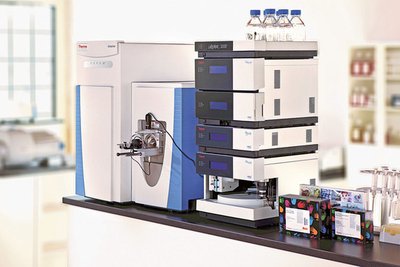Infrastructure
The center has all the necessary equipment to study protein:protein interactions at various levels:
1) State-of-the-art Dionex UltiMate3000 RSLCnano system that offers continuous direct flow delivery via a nano pump combined with a flow meter for continuous, pulse-free, and direct flow. The system provides uninterrupted operation with 800 bar column pressure which can deliver a fluid flow from 20 nL/min to 50 μL/min.
2) Thermo Scientific Q Exactive mass spectrometry system. The Q Exactive is a high performance benchtop quadrupole Orbitrap system based on the combination of the most advanced quadrupole technology combined with the Orbitrap analyzer technique. Implementation of a quadrupole mass filter in front of the curved ion trap (C-Trap) allows for precursor ion selection and hence for MS/MS and SIM scan modes besides the ability of full MS mode. In addition to the high sensitivity S-lens ion source, with the implementation of enhanced FT transient processing, further increase of scan speed and resolving power can be achieved. Together with the new and unique scan type of spectra multiplexing, where multiple preselected precursors are collected in the C-Trap for simultaneous high resolution detection in the Orbitrap further reduction of cycle time can be accomplished. Q Exactive is the most sensitive bench-top quadrupole high resolution mass spectrometer perfectly combining precise quantification and high performance qualitative work in one instrument.

3) State-of-the-art automated live cell imaging microscope with EMCCD camera (iMIC, TILL Photonics) specifically set-up for BRET imaging (to follow up on protein interactions).
4) Major equipment for molecular biology and structural biology as well as facilities for biochemistry, protein chemistry, cell biology (cell culture facilities and molecular biological facilities for cell transfection, plasmid production etc.).
5) Imaging. Confocal microscopes (2 instruments), two-photon confocal microscopy (2 instruments), electron microscopes (4 instruments), a live-cell fluorescent imaging microscope.